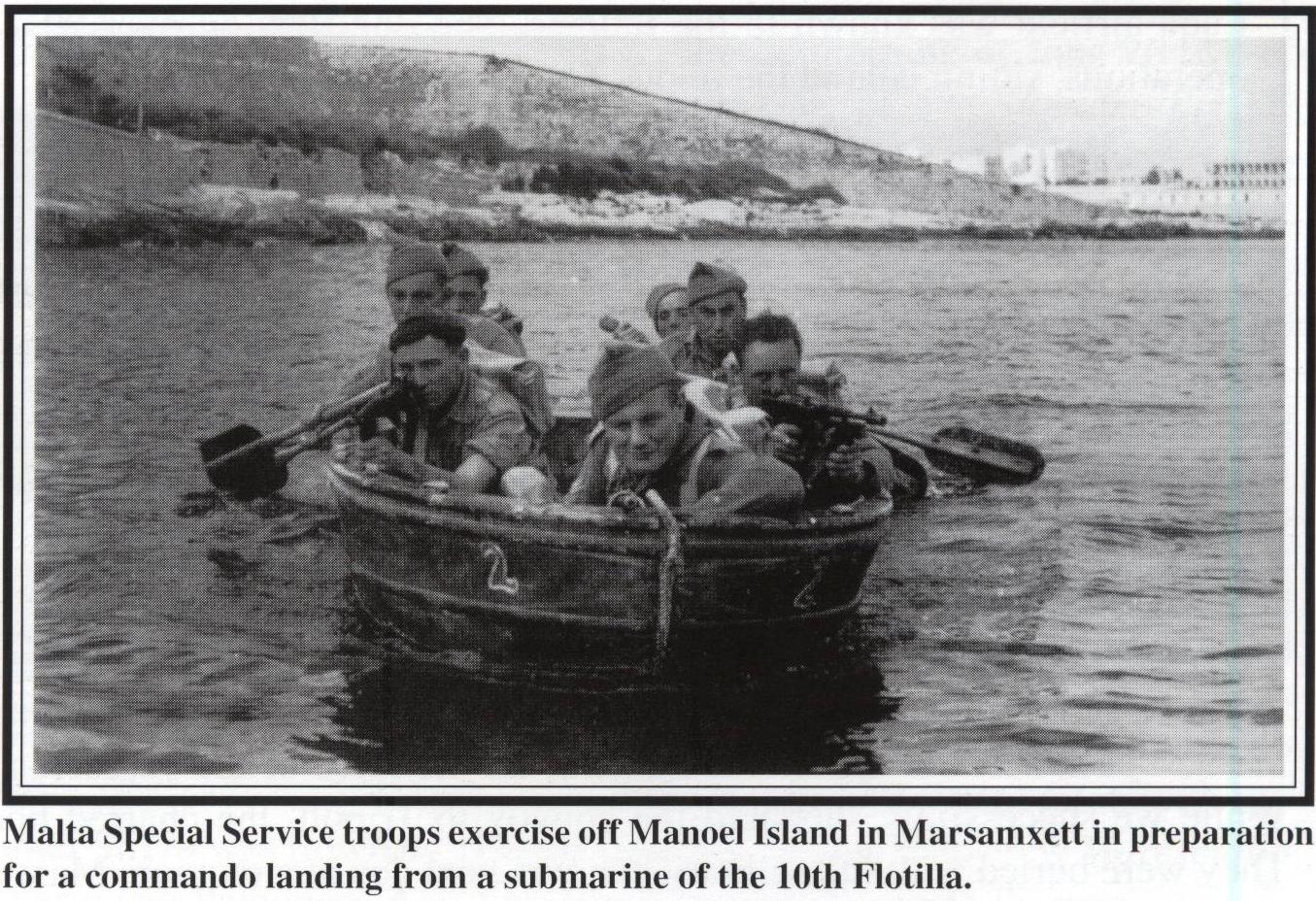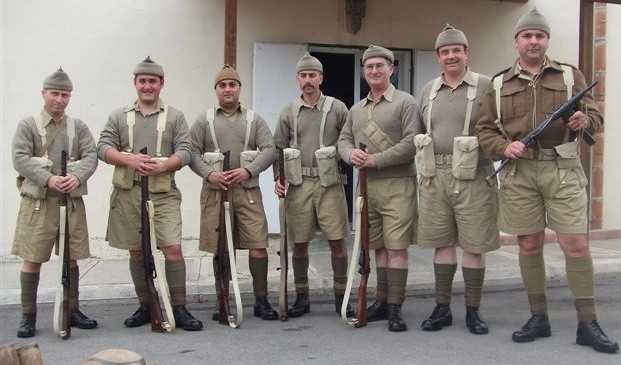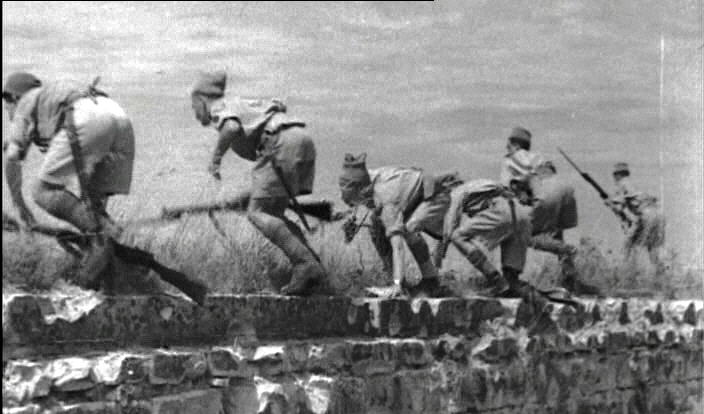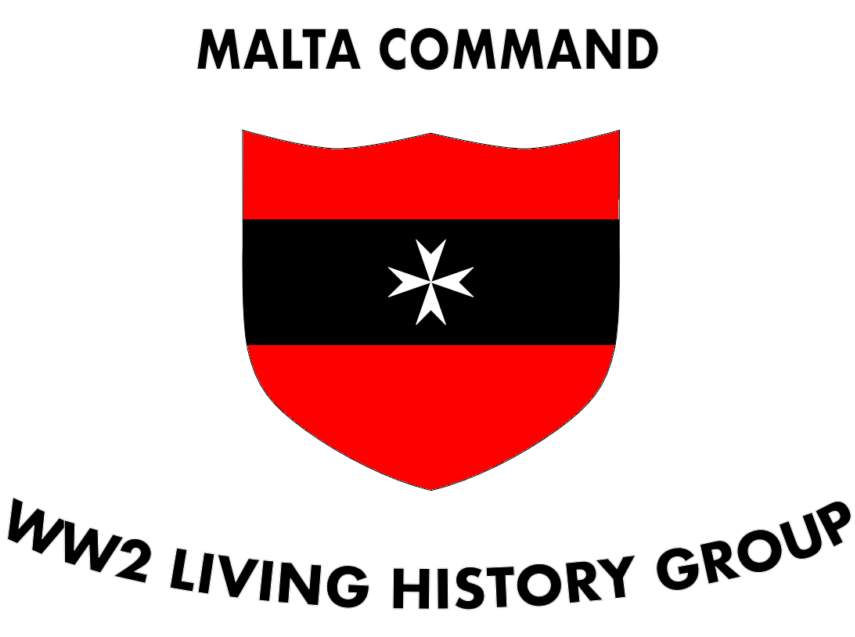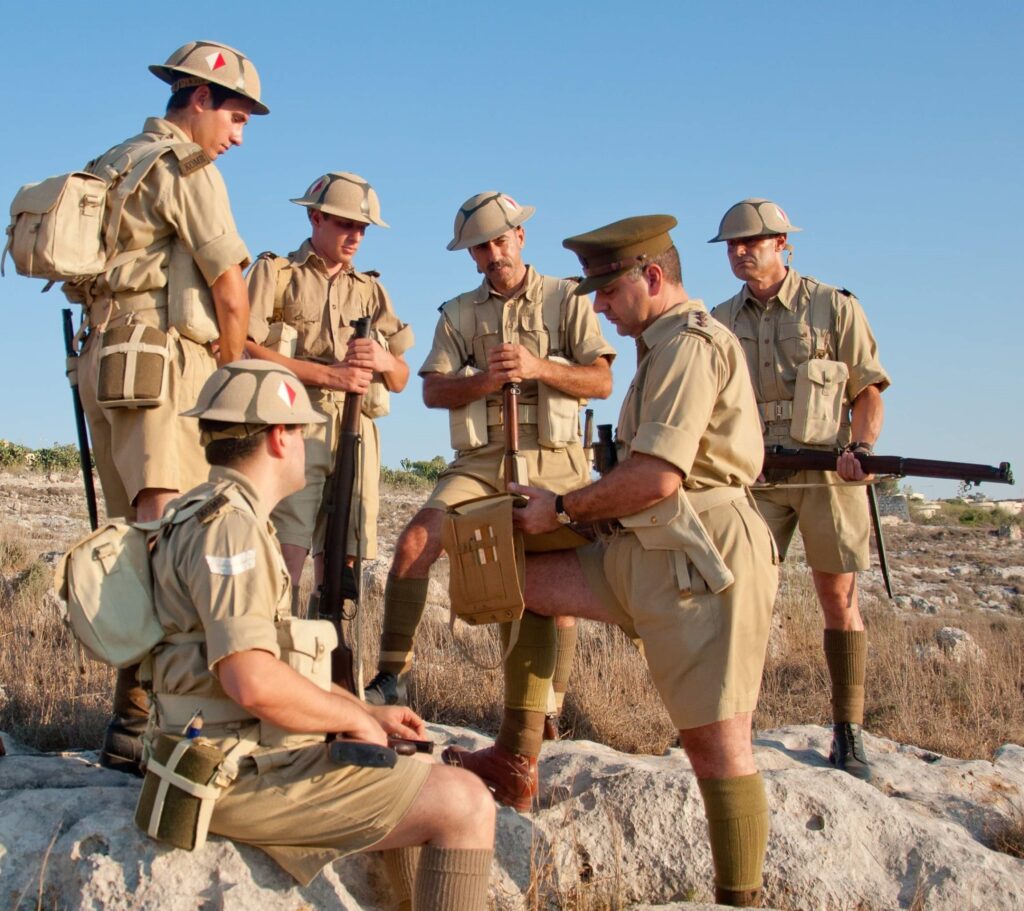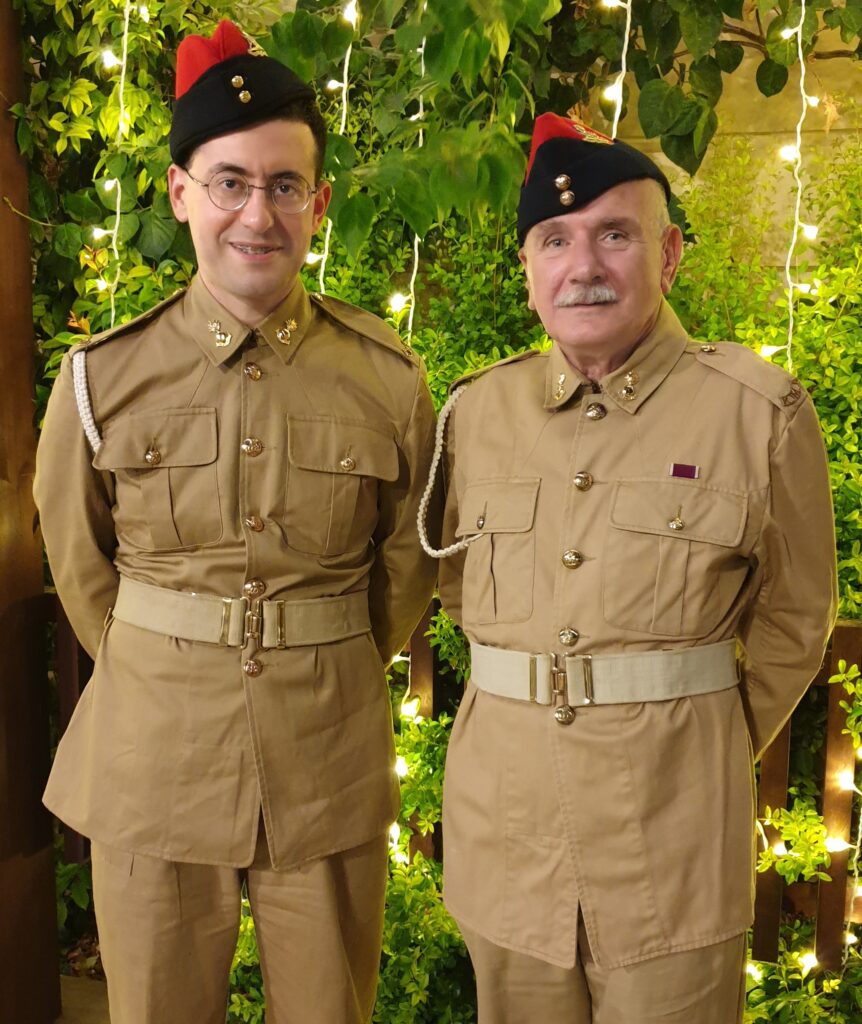The British Army soldier of WW2 possessed a vast array of kit, this of course included items of uniform as well as personal and fighting equipment. Here you can find what any soldier serving in Malta (not only the Maltese Regiments) would possess with some information and peculiarities about how this was used on our island.
Winter Uniform
The standard issue uniform issued to the British soldier in the UK was the Battle Dress (BD). Being made of serge this was appropriate for the cold temperatures of NW Europe, but was not the case for Southern Europe or North Africa. Malta, lying in between, was no exception. The BD was known in Malta as the winter uniform, this was to be worn from November till the end of May. This consisted of a BD blouse with two chest pockets and epaulettes, BD trousers with a First Field Dressing pocket and a larger ‘map’ pocket on the left leg. Under the blouse one had to wear a woolen collarless shirt and keep the Blouse collar closed, Officers could open the collar and wear a shirt and tie. Web belt, ammo boots and gaiters were standard. Men were also issued with a pullover and a greatcoat.
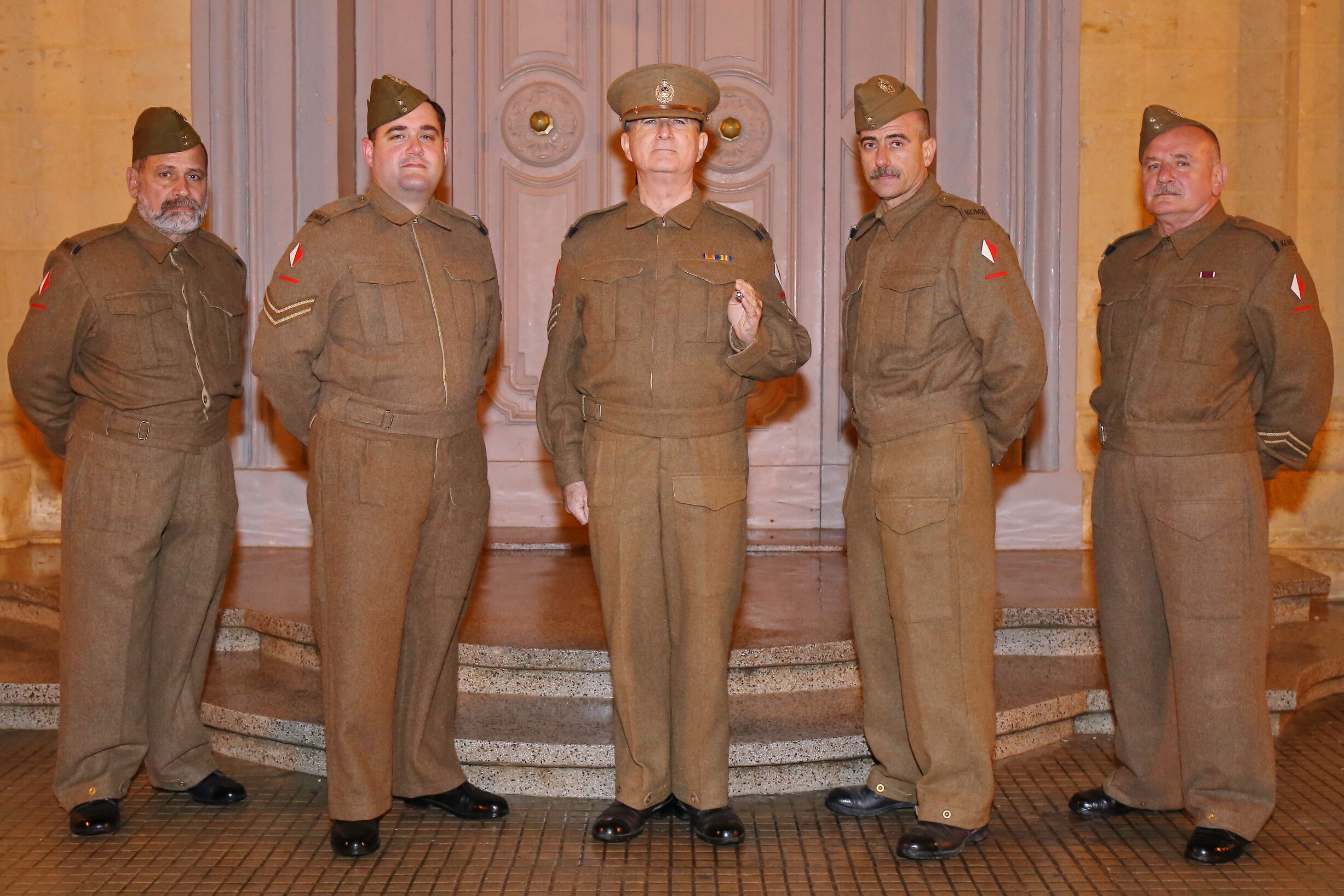
Since temperatures on Malta change fast it was very common for servicemen to adapt their uniforms to the situation. This resulted in various combinations which didn’t really reflect ‘uniformity’. The BDs used in Malta were of the first pattern known as the ‘37 pattern. Due to the endless destruction of convoys bringing supplies to the island, the ‘40 “austerity” pattern never got to Malta in large amounts and was therefore never issued. Denim BD uniforms were also used often instead of the woolen BDs. These were of a lighter material and therefore ideal for the hotter late months of winter.



Summer Uniform
The Khaki Drill (KD) or summer uniform was the most common type of clothing donned throughout the year in Malta. This consisted of a pair of 40 pattern shorts, an aertex shirt and web belt. Aertex was a type of breathable material which was supposed to keep the wearer cooler. To protect their legs from the sun (especially the British), soldiers wore hose tops, a sort of woolen leg warmer which covered from the ankle to the knee. This was kept in place inside the ammo boot by means of puttees which were wrapped around the ankle. Puttees reinforced the ankle (Maltese terrain is VERY rough) and also ensured waterproofing. Officers were also issued with bush jackets which had four pockets and were worn over the shorts.



All webbing used by soldiers in Malta was blancoed in a special “light stone” colour. There were various messy ways of doing this but the most common system used was that of mixing some clay, blanco and sugar until a yellowish KD colour was obtained. Coincidently the best clay for this job could be found on a slope very close to Għajn Tuffieha rest camp. Brass was always kept shining.The most common layout for webbing was the Battle Order; this was mainly used in combat and training. It consisted of a pair of cross straps and a web belt to which the soldier would attach a pair of ammo pouches, water bottle and a bayonet. A small pack was carried on the back during patrols or long exercises, in it a soldier would keep some clothing, water and some supplies like food or extra ammo. The entrenching tool was not issued in Malta since digging foxholes is impossible on the rocky island. Infantry used the multi purpose ammo pouches which were large enough to take Bren magazines, grenades, charger clips etc. Artillery men were issued with twin ammo pouches which could take 4 charger clips each.
When on parade or on guard duty, soldiers would wear Musketry Order webbing. This merely consisted of a web belt and bayonet frog. Guards of honour, parades, inspections and other ceremonial duties were continued by the Maltese soldiers even during the worst periods of the war. The men’s turnout was always 100%.
When the soldier had to move a long distance or during route marches, he would have worn the Marching Order. Standard battle order layout would be worn with the difference that the small pack would be slung on the soldier’s right hip instead of the water bottle and the large pack (haversack) was worn on the shoulders. Men would carry most of their belongings or heavier clothes in the large pack.

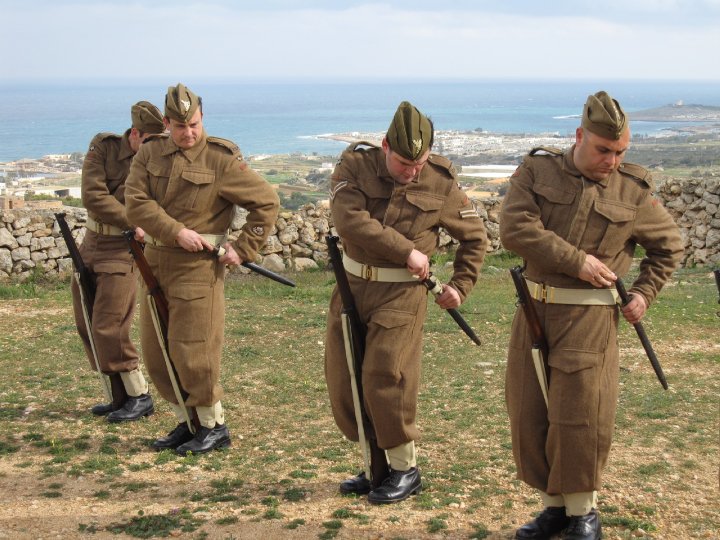
Headgear
The headgear used on the Maltese Islands consisted mainly of the FS Cap and the Mk.II helmet.
The Field Service (FS) Cap was the standard British Army headgear worn in Malta. Often referred to as the side cap (since it was worn tilted to the right side of the head), this was made of khaki barathea and had two fold down flaps to cover the ears and neck in case of cold weather, these were kept in place by means of 2 GS buttons. The regimental or corps badge was worn on the front left side of the cap. The FS Cap was used until 1943 when it was replaced by a more practical (yet ugly) GS Cap. By August 43 the war had moved away from Maltese shores and therefore the changeover from FS to GS was quite fast, unlike with the Battledress.
The Mk.II helmet used in Malta had a unique and distinguishable camouflage pattern applied to it. Helmets came in their standard dark green colour from England, a colour which does not really exist on our dry and light Mediterranean terrain. Infantrymen wanting to blend in with the scenery decided to paint their helmets in the Maltese Camouflage (stone wall) pattern. Soon all helmets issued not only to army personnel but also Police and ARP were appearing in this pattern (fashion trend?). Army helmets were painted “en masse” whereas civilian or police were “do-it-yourself” jobs, this meant that no pattern was ever the same. Colours also varied since the supply of paint was very scarce. A common remedy was to paint patches of whatever colour on the helmet and cover it up with sand. This pattern was also used during the invasion of Sicily by small numbers of troops, presumably those coming from Malta. After the war all army helmets were re-painted in green, thus originals are an extreme rarity.
Another type of headgear which was also used often was the cap, comforter. This was a “beanie” type of hat used to keep the wearer warm in cold climate or at nights, the cap could also be used as a scarf wrapped around the neck. Although normally associated with commandos, this cap was issued to all troops. Photographs show that the cap comforter was also used by Maltese and British troops in Malta for commando style training and missions such as small scale raids on Sicily.
